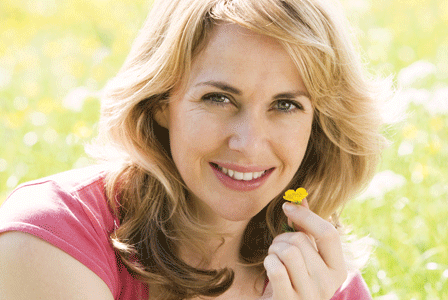
Are you frustrated by chronic yeast infections? The most effective treatment and remedies must be directed at restoring long-term healthy flora balance.
Are you frustrated by chronic yeast infections that seem to remain or recur, regardless of the many over-the-counter remedies you have tried? Also known as candidiasis, yeast infections affect up to 75 percent of women in their lifetime.
If you’re a woman you’ve likely experienced vaginal infections, although yeast infections may occur in women and men in the digestive tract, mouth (as thrush), sinuses, or on the skin. Widespread systemic infections may occur in immune compromised individuals.
Causes
Candida albicans is a naturally occurring yeast controlled by our friendly bacteria, Lactobacillus acidophilus. Yeast infections occur when Candida albicans overgrows, frequently as a result of antibiotic use, which disrupts our bacterial balance leaving yeast to grow and flourish.
Other causes of infection include poor dietary habits such as excess sugar or alcohol consumption; weakened immunity; corticosteroids or other immune suppressing medications; hormonal changes associated with menopause, pregnancy, or menstrual cycles; and health conditions such as diabetes or cancer.
Symptoms
Proper diagnosis is important to ensure effective treatment. Vaginal yeast infections are associated with itching and burning with or without a vaginal discharge which is commonly described as similar to cottage cheese.
Males with genital yeast infections may be asymptomatic or experience an itchy rash on the penis. Oral yeast is associated with a throat coated in a white layer and mouth soreness.
Other related symptoms of chronic yeast infections include abdominal gas or bloating, indigestion, nasal congestion or sinus problems, bad breath, skin rashes, increased allergies and chemical sensitivities, rectal itching, fatigue, difficulty concentrating, headaches, and sugar cravings.
4-step treatment plan
The most effective treatment for chronic yeast infections must be directed at restoring long-term healthy flora balance as opposed to short-term symptomatic relief.
STEP 1: Detox with yeast-free foods
Your nutrition habits are an important component of your treatment plan. Yeast feeds on particular food sources; therefore, avoidance of these foods will provide long-term relief.
Eliminate the following foods for a period of four to 12 weeks. If, however, you experience a flare-up of symptoms upon reintroduction of these foods, you should extend the candida diet.
Foods to avoid:
| Sweets |
|
| Dairy Products |
|
| Foods that easily convert to simple sugars |
|
| Yeast |
|
|
Cheese |
|
| Fermented foods |
|
| Smoked products |
|
| Alcohol |
|
| Yeast triggers |
|
Your diet should focus on the following immune-enhancing, yeast-free foods:
| Proteins |
|
| Grains |
|
|
Non-starchy vegetables |
|
|
Condiments and oils |
|
|
High carbohydrate foods Limit these food choices to one serving maximum per day: sweet potatoes, white potatoes, parsnips, and cooked carrots. |
STEP 2: Restore bacterial balance
Replenish levels of acidophilus and bifidus to help counteract an overgrowth of candida. Follow any series of antibiotics with acidophilus supplements for twice the amount of time you took the prescription of antibiotics. I recommend taking a 10 to 15 billion capsule, one to two pills on rising and before bed, without food.
Saccharomyces boulardii (SB), the only probiotic yeast available in supplement form, is a competitor for candida. European studies suggest that SB may prevent candida from spreading and may also protect the gut from diarrhea caused by amebas, C. difficile, and cholera. Take two capsules on rising and before bed, without food.
STEP 3: Test your levels of stomach acid
Stomach acid, technically known as gastric acid which consists mainly of hydrochloric acid, is essential for proper functioning of the digestive system. Low acidity may result in only partial digestion of foods leading to gas, bloating, belching, diarrhea, or constipation.
Candida can grow out of control when the acid levels in the stomach or the vagina change. Normal levels of stomach acid also help to keep the digestive system free of bacteria, yeast, and parasites.
If you are searching for a simple way to determine your stomach levels, take a peek at your fingernails. If you have vertical (lengthwise) ridges, it’s a characteristic sign of low stomach acid. Your health care practitioner can also conduct tests for stomach acidity.
STEP 4: Attack yeast with an anitfungal agent
Because there are different strains of yeast and some are resistant to antifungal agents, more than one antifungal agent is required for successful treatment. Treatment is recommended for four weeks to six months, depending on the severity of your symptoms. Consult your health care practitioner about the antifungal agent that’s right for you.
By following these simple suggestions, you can resolve a troublesome yeast infection for good.
3 Antifungal Yeast Fighters
Oregano oil is an effective antifungal agent for all types of yeast infections. A typical dose is 2 to 3 drops under the tongue, 2 to 3 times a day with or without meals.
Psyllium husks are an effective source of fibre for digestive cleansing, while caprylic acid is an antifungal agent that kills candida. These products can be taken before bed on an empty stomach, as directed on the label.
Preliminary results from laboratory studies suggest that cinnamon oil and cinnamon extract have anti-candida properties. Consume 1/2 to 3/4 tsp (2 to 4 g) of powder per day or one to two capsules of 200 mg cinnamon oil twice daily with meals.

